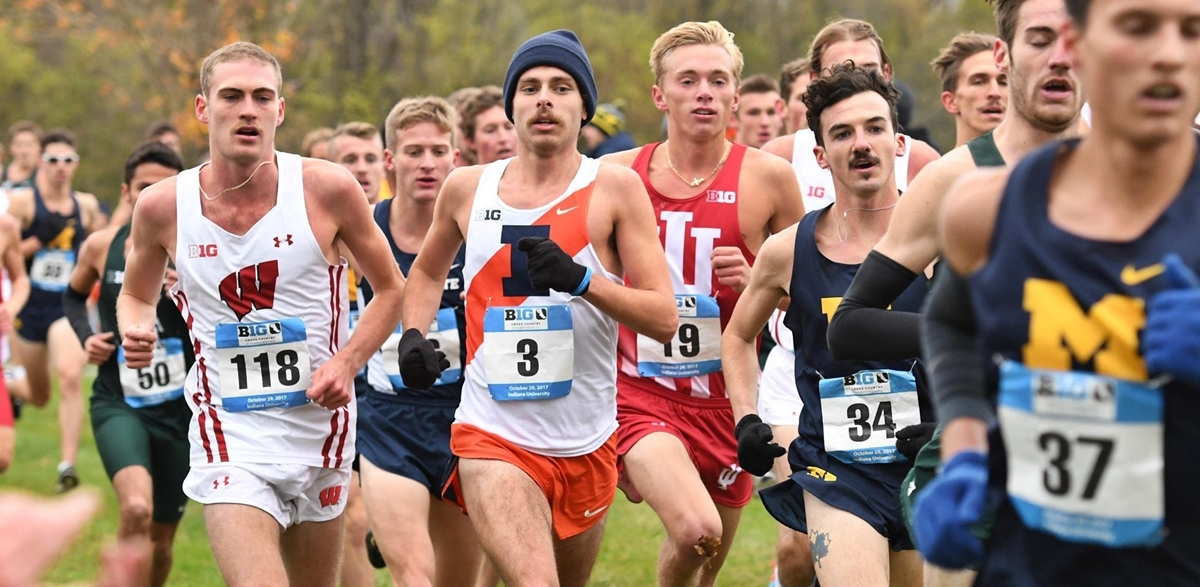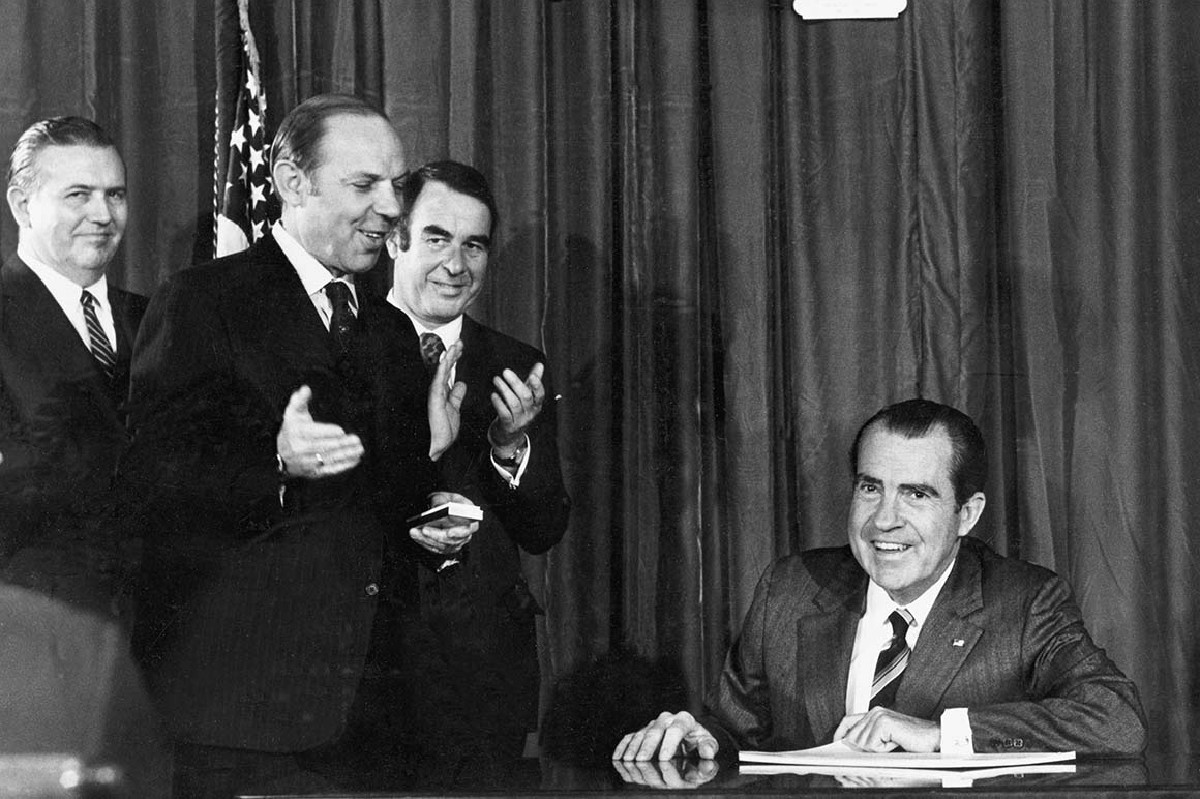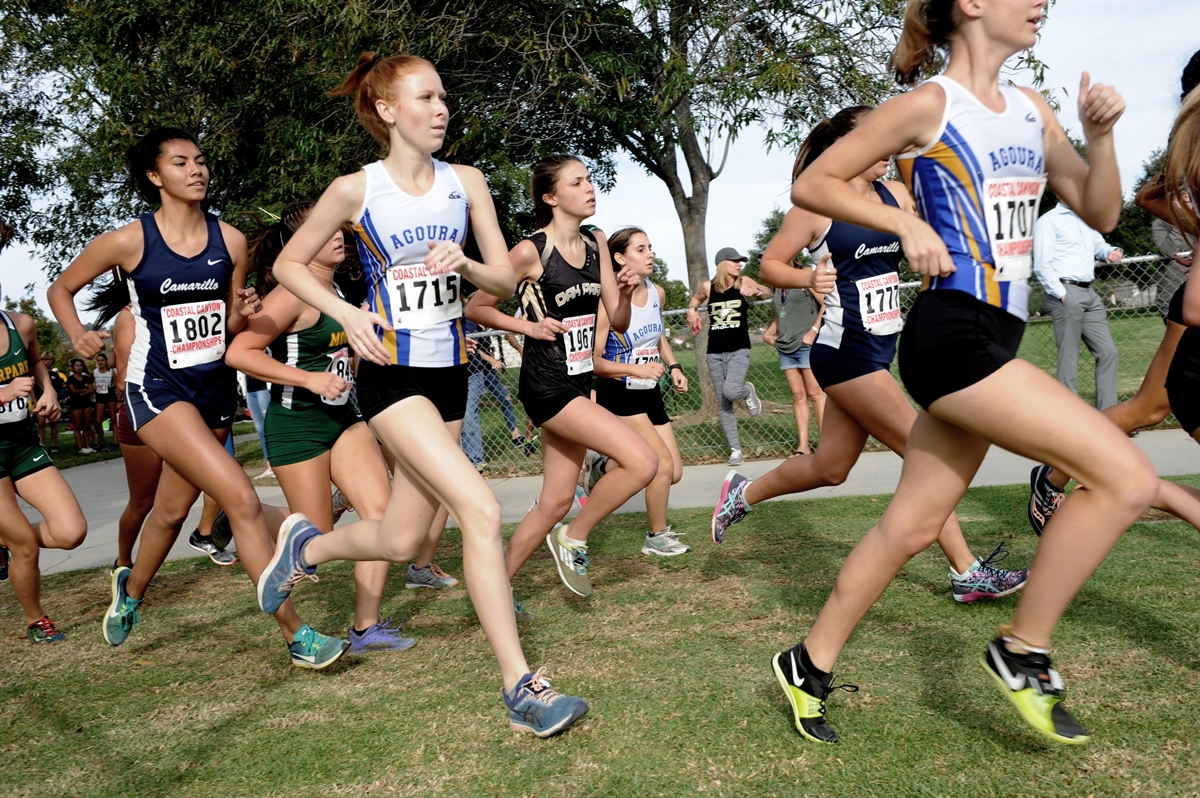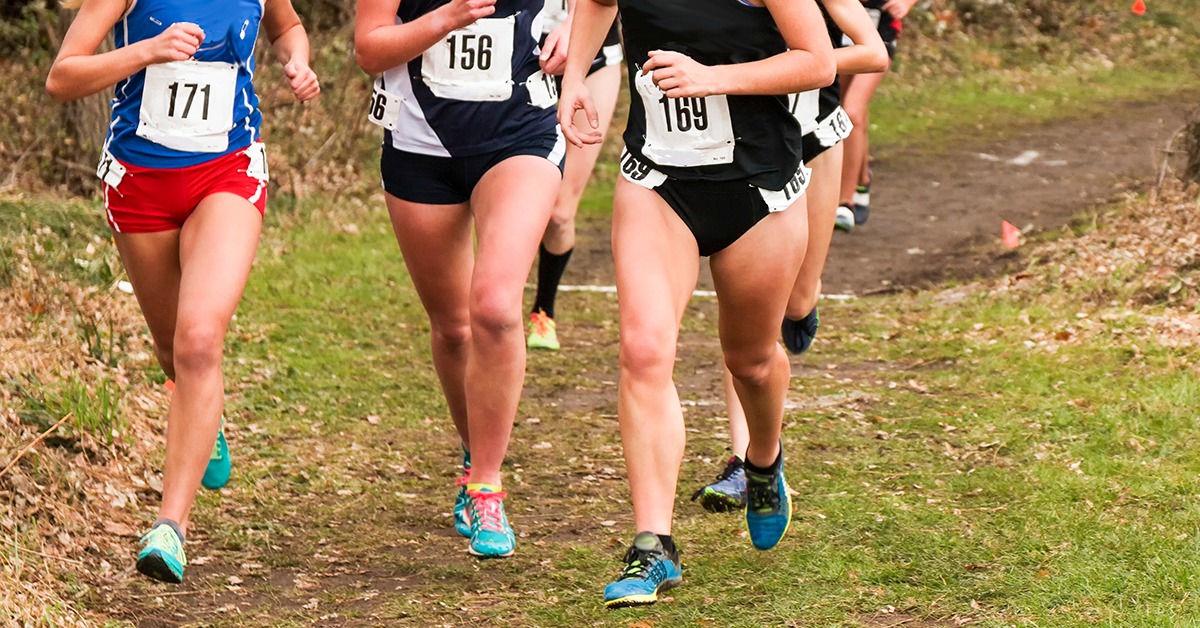Home>Misc>Featured>How To Qualify For Virginia Cross Country States
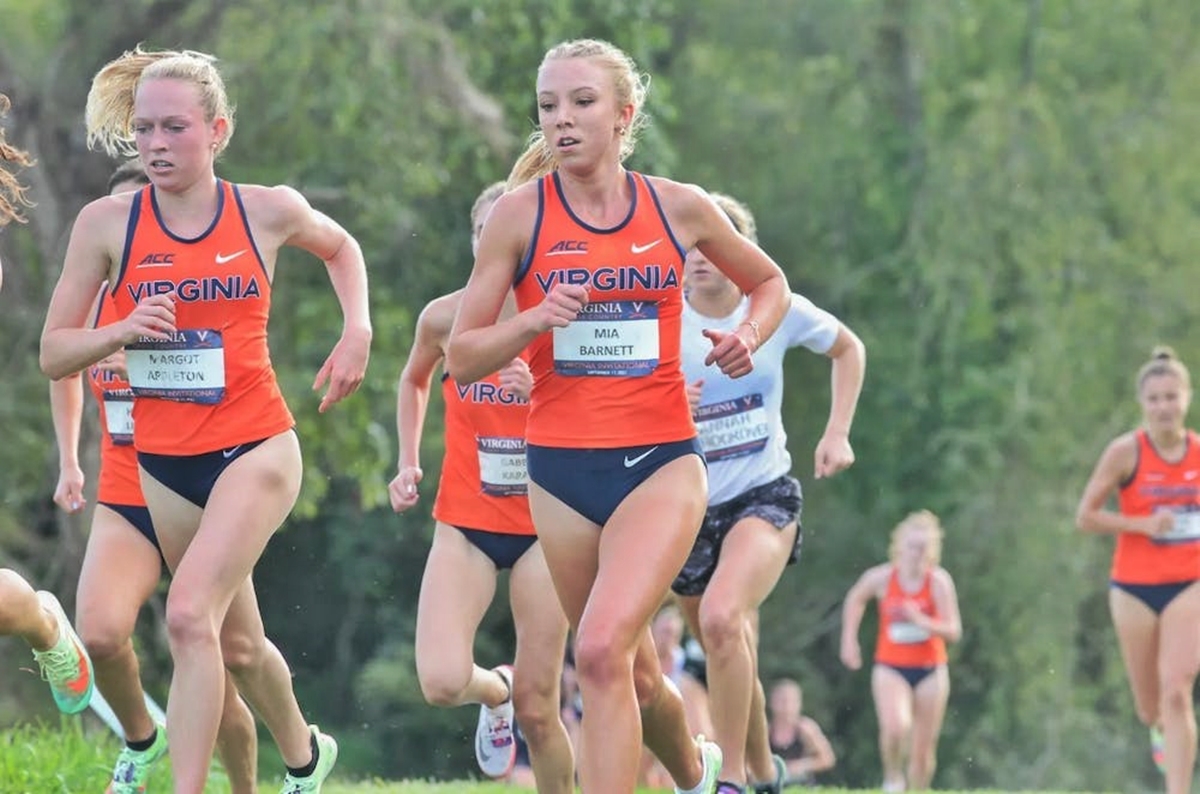

Featured
How To Qualify For Virginia Cross Country States
Modified: August 22, 2023
Learn how to qualify for the Virginia Cross Country States as a featured runner in just a few simple steps. Achieve your goals and reach new heights in your running journey.
Introduction
Competing in the Virginia Cross Country States is a dream for many high school athletes. The exhilaration of racing against the best runners in the state, the prestige of representing your school, and the opportunity to showcase your skills are all reasons why qualifying for this event is a major accomplishment.
However, the road to the Virginia Cross Country States is not an easy one. It requires hard work, dedication, and a strategic approach to both training and competition. In this article, we will explore the qualification process for the Virginia Cross Country States and provide valuable tips and insights on how to increase your chances of success.
Whether you are a seasoned runner or new to the sport, understanding the qualification process is crucial. The Virginia High School League (VHSL) divides the state into six regions, each with its own set of qualification standards. In order to qualify for the Virginia Cross Country States, runners must first meet the standards set by their respective region.
Meeting the qualification standards for your region requires consistent training and a commitment to improving your performance. It’s important to maintain a high level of fitness throughout the season and consistently strive to meet or exceed the time standards set by the VHSL.
Aside from meeting the standards, competing in district races is an important step towards qualifying for the Virginia Cross Country States. District races serve as a stepping stone towards the state competition, and performing well in these races can boost your chances of earning a spot at the prestigious event.
Preparing for these district races involves a combination of physical and mental training. Developing a training strategy that focuses on building endurance, speed, and strength is essential. Additionally, implementing effective race strategies and mental preparation techniques can give you a competitive edge over your opponents.
The course itself poses its own challenges, from varying terrain to challenging weather conditions. Navigating these course challenges requires adaptability and the ability to make quick decisions during the race. We will explore strategies on how to overcome these obstacles and maintain momentum throughout the race.
Furthermore, maintaining peak performance throughout the season is key to qualifying for the Virginia Cross Country States. This includes proper recovery techniques, injury prevention strategies, and a balanced approach to training and rest. Taking care of your body and mind is crucial for long-term success in the sport.
Lastly, fostering a sense of teamwork and support within your cross country team can greatly enhance your chances of qualifying for the Virginia Cross Country States. Building a strong team dynamic and helping each other improve can create a positive environment that propels everyone towards success.
In the following sections, we will delve deeper into each of these topics and provide practical tips and advice on how to qualify for the Virginia Cross Country States. Whether you’re a seasoned runner looking to take your performance to the next level or a beginner aiming to make your mark in the sport, this article will provide you with the insights and strategies you need to achieve your goals.
Understanding the Qualification Process
Before embarking on your journey to qualify for the Virginia Cross Country States, it’s important to have a clear understanding of the qualification process. The Virginia High School League (VHSL) divides the state into six regions, each with its own specific qualification standards.
Each region sets its own time standards for both individual runners and teams. These time standards represent the benchmark that runners must meet or exceed in order to qualify for the Virginia Cross Country States. It’s essential to familiarize yourself with the qualification standards for your region to gauge where you currently stand and set realistic goals.
In addition to the time standards, it’s important to note that each region is allocated a certain number of spots for both individual runners and teams at the Virginia Cross Country States. This means that not only do you have to meet the qualification standards, but you may also have to perform better than other runners within your region in order to secure one of these limited spots.
It’s crucial to stay updated with the qualification process and any changes made by the VHSL. The rules and regulations surrounding the qualification process may be updated from year to year, so be sure to check for any updates or modifications.
Understanding the qualification process also involves being aware of the different divisions within the VHSL. In some regions, the qualification standards may vary between divisions, based on factors such as school size. Make sure you are aware of the specific qualifications based on your division to avoid any misunderstandings.
To get a better sense of the qualification process, it can be helpful to talk to your coaches, fellow team members, or athletes who have previously competed in the Virginia Cross Country States. They can provide valuable insights and advice based on their own experiences, helping you navigate the process more effectively.
Having a thorough understanding of the qualification process is essential as it allows you to set achievable goals and tailor your training and preparation accordingly. It provides you with a clear roadmap towards qualifying for the Virginia Cross Country States and ensures that you are informed and prepared for every step of the process.
Meeting the Regional Qualification Standards
In order to qualify for the Virginia Cross Country States, it is crucial to meet the regional qualification standards set by the Virginia High School League (VHSL). These time standards serve as a benchmark that runners must meet or exceed to secure a spot at the prestigious event.
Meeting the regional qualification standards requires consistent training and a commitment to improving your performance. It’s essential to have a clear understanding of the specific time standards that apply to your region and division.
To work towards meeting these standards, it’s important to develop a systematic training plan that includes a balance of endurance, speed, and strength training. Incorporate regular long runs to build your endurance, tempo runs to improve your speed, and strength exercises to enhance your overall performance.
In addition to the physical aspect of training, mental preparation is equally important. Develop a positive mindset and visualize yourself achieving the qualification standards. Use positive affirmations and visualization techniques to build confidence and belief in your abilities.
Tracking your progress is essential to ensure that you are on the right path towards meeting the regional qualification standards. Keep a training log where you can record your workouts, mileage, and times. This will allow you to monitor your progress, identify areas that need improvement, and make any necessary adjustments to your training plan.
While training is important, it’s equally important to pay attention to other aspects of your lifestyle that can impact your performance. This includes getting enough sleep, eating a nutritious diet, and staying hydrated. These factors contribute to your overall well-being and can significantly impact your ability to meet the regional qualification standards.
Consider participating in smaller races and time trials throughout the season to gauge your progress and assess your current fitness level. These races can serve as valuable indicators of your performance and provide opportunities for improvement before the regional qualification races.
Seeking the guidance of your coach or a running specialist can also be beneficial. They can provide personalized training advice, help you identify areas for improvement, and offer valuable insights on how to meet the regional qualification standards.
Remember, meeting the regional qualification standards requires hard work, perseverance, and dedication. It may not happen overnight, but with consistent training, mental preparation, and proper guidance, you can increase your chances of reaching and surpassing these standards to secure your spot at the Virginia Cross Country States.
Preparing for District Races
District races play a crucial role in the qualification process for the Virginia Cross Country States. These races serve as a stepping stone towards the state competition, and performing well in district races is vital to increasing your chances of earning a spot at the prestigious event.
Preparing for district races requires a combination of physical and mental training, as well as strategic planning. Here are some tips to help you effectively prepare:
1. Familiarize Yourself with the Course: Take the time to study and understand the course for the district race. Walk or run the course beforehand to familiarize yourself with its terrain, elevation changes, and any challenging sections. This will allow you to develop a race strategy tailored to the specific course.
2. Adapt Your Training: Modify your training to align with the demands of the district race. Incorporate workouts that mimic the course’s challenges, such as hill repeats or interval training on similar terrain. By training specifically for the district race, you can improve your performance on race day.
3. Develop a Race Strategy: Based on your knowledge of the course, devise a race strategy that plays to your strengths. Identify key sections where you can push the pace or make up time. Consider the competition and strategize accordingly, aiming to position yourself well throughout the race.
4. Mental Preparation: District races can be nerve-wracking, so mental preparation is vital. Utilize techniques such as visualization, positive affirmations, and deep breathing exercises to calm your nerves and build confidence. Visualize yourself executing your race strategy and crossing the finish line successfully.
5. Focus on Tapering: Implement a tapering phase in the days leading up to the district race. Gradually reduce your training volume to allow your body to recover and reach peak performance on race day. This tapering period ensures that you’re fresh and energized for the race.
6. Nutrition and Hydration: Prioritize your nutrition and hydration leading up to the district race. Fuel your body with balanced meals and hydrate adequately to optimize your performance. Avoid trying new foods or drinks on race day to prevent any digestive issues.
7. Get Adequate Rest: Rest and recovery are key components of successful race preparation. Ensure you’re getting enough sleep to allow your body to recharge and repair. Avoid strenuous activities in the days leading up to the race to prevent fatigue and ensure your best performance.
8. Race Simulation: Perform race simulations during your training to practice your race strategy and familiarize yourself with race-like conditions. Mimic the race distance and course as closely as possible to prepare yourself mentally and physically.
9. Seek Support: Lean on your coach, teammates, and support system for encouragement and guidance. Surrounding yourself with a positive and supportive network can boost your confidence and provide valuable insights during the preparation process.
By effectively preparing for district races, you can increase your chances of performing well and securing a spot at the Virginia Cross Country States. Remember, every race is an opportunity for growth and improvement, so embrace the challenge and give it your all.
Training Strategies for Success
Developing a comprehensive and effective training plan is crucial to improving your performance and increasing your chances of qualifying for the Virginia Cross Country States. Here are some key training strategies to help you achieve success:
1. Set Clear Goals: Start by setting clear and specific goals for your training. Whether it’s improving your race times, building endurance, or increasing speed, having tangible goals allows you to focus your training efforts and track your progress.
2. Establish a Training Schedule: Create a training schedule that balances your running workouts with rest and recovery. A structured schedule helps you stay committed and ensures that you’re consistently putting in the necessary work to improve.
3. Build Endurance: Endurance is a key factor in cross country running. Incorporate long runs into your training schedule to gradually build up your endurance. Gradually increase the distance of your long runs to challenge yourself and improve your ability to sustain a fast pace.
4. Speed Workouts: Integrate speed workouts into your training plan to develop your anaerobic capacity and improve your race pace. Tempo runs, fartlek training, and interval workouts are great ways to increase your speed and improve your ability to sustain a fast pace during races.
5. Incorporate Strength Training: Strength training plays a vital role in injury prevention and improving performance. Include strength exercises that target your leg muscles, core, and upper body in your training routine. This will enhance your overall strength, stability, and running efficiency.
6. Hills Training: In cross country, hills are a common challenge. Incorporate hill workouts into your training regimen to improve your strength, power, and technique when running uphill. This will give you an advantage during races when you encounter hilly terrain.
7. Cross-Training: Consider incorporating cross-training activities such as cycling, swimming, or yoga into your training routine. Cross-training provides variety, improves overall fitness, and helps prevent overuse injuries by reducing the impact on your joints.
8. Recovery and Rest: Give equal importance to rest and recovery as you do to your runs. Allow your body time to recover and repair after intense workouts. Listen to your body and take rest days when needed to prevent overtraining and avoid burnout.
9. Nutrition and Hydration: Fueling your body with proper nutrition and hydration is essential for optimal performance. Consume a balanced diet that includes complex carbohydrates, lean proteins, and healthy fats. Stay hydrated by drinking water regularly throughout the day.
10. Monitor and Adapt: Continuously monitor your progress and make adjustments to your training plan as needed. Pay attention to how your body responds to different workouts and modify your training intensity or frequency accordingly. This will ensure that your training remains effective and aligned with your goals.
By implementing these training strategies, you can improve your fitness, stamina, and performance, ultimately increasing your chances of qualifying for the Virginia Cross Country States. Remember, consistency, dedication, and a smart approach to training are key to achieving success in cross country running.
Implementing Effective Race Strategies
Executing effective race strategies is vital to achieving success in cross country and qualifying for the Virginia Cross Country States. Here are some key race strategies to help you perform to your fullest potential:
1. Start Strong, but Controlled: The start of a race can be chaotic, with runners jostling for position. It’s important to start strong but maintain control. Find a balance between being assertive and avoiding getting swept up in the initial rush. Settle into your race pace and find a comfortable rhythm.
2. Pace Yourself: Cross country races require endurance, and pacing yourself is essential. Avoid starting too fast to conserve energy for later stages of the race. Aim for a steady and controlled pace, gradually increasing your effort as the race progresses.
3. Position Wisely: Positioning yourself strategically within the race can make a significant difference. Don’t get boxed in or stuck behind slower runners. Strive to find open spaces and maintain a clear line of sight ahead. Being aware of your surroundings and making small adjustments throughout the race can help you find the best racing line.
4. Focus on Your Form: Maintaining proper running form is crucial for efficient and effective racing. Stay relaxed, keep your head up, and focus on a strong arm swing and quick turnover. Good form improves your efficiency and reduces the risk of fatigue or injuries.
5. Stay Mentally Strong: Cross country races can be mentally challenging, especially during tough sections or when competing against strong opponents. Practice positive self-talk and employ mental strategies to stay focused and motivated. Break the race into smaller sections and set mini-goals to stay engaged and drive your performance forward.
6. Observe and React: Assess the course and race conditions as you run. Take note of any changes in terrain, weather, or competition around you. Be prepared to adjust your strategy accordingly. Stay adaptable and make informed decisions to maintain your momentum and navigate any obstacles.
7. Utilize Your Strengths: Identify your strengths as a runner and play to them during the race. If you excel at uphill segments, use them to your advantage and push the pace. If you have a strong finishing kick, conserve energy for the final stretch and unleash your sprint at the right time. Leverage your strengths to gain an edge over your competitors.
8. Stay Hydrated and Fueled: Proper hydration and nutrition during the race are essential for maintaining energy levels. Take advantage of aid stations to hydrate and consider carrying energy gels or snacks if needed. Practice your race nutrition strategy during training to ensure it works well for your body.
9. Finish Strong: As you approach the final stage of the race, dig deep and give it your all. Tap into your mental and physical reserves, especially if you’re competing for a qualifying spot. Push the pace, surge past competitors if possible, and finish strong with determination.
10. Learn from Each Race: Every race provides an opportunity to learn and improve. Reflect on your performance after each race, identifying areas of strength and areas that need improvement. Analyze your race strategies and make adjustments in your training and preparation based on these insights.
By implementing these effective race strategies, you can maximize your performance and increase your chances of qualifying for the Virginia Cross Country States. Remember, each race is a learning experience, and by continuously refining your strategies, you can grow as a runner and achieve your goals.
Mental Preparation and Visualization Techniques
Mental preparation plays a crucial role in cross country running, and developing effective mental strategies can greatly enhance your performance on the course. Here are some key techniques for mental preparation and visualization:
1. Set Positive Affirmations: Create positive affirmations that reflect your capabilities as a runner. Repeat these affirmations before and during the race to build confidence and self-belief. Examples include “I am strong,” “I am capable,” and “I can overcome any challenge.”
2. Visualize Success: Visualization involves mentally rehearsing your race performance in a positive and detailed manner. Imagine every aspect of the race: the course, the competition, and your ideal performance. Visualize yourself running with ease, maintaining a strong pace, and crossing the finish line successfully. This technique helps to build confidence and familiarize your mind with what success feels like.
3. Practice Mindfulness: Incorporate mindfulness techniques into your training and race day preparation. Being mindful involves focusing on the present moment, paying attention to your breath, body sensations, and thoughts. Mindfulness can help calm pre-race nerves, improve focus, and enhance overall performance.
4. Breathing Exercises: Deep breathing exercises are an effective way to calm the mind and relax the body. Practice diaphragmatic breathing, where you inhale deeply through your nose, hold for a few seconds, and exhale slowly through your mouth. This technique can help reduce anxiety and center your focus before and during the race.
5. Create a Race Day Routine: Establishing a routine on race day can create a sense of familiarity and help ease nerves. This routine can include a warm-up routine, visualizations, and positive affirmations. Having a structured pre-race routine can help you get into the right mindset for a successful race.
6. Break the Race into Smaller Segments: Cross country races can feel overwhelming if you think about the distance as a whole. Instead, break the race into smaller segments or landmarks. Focus on reaching one section at a time, setting mini-goals throughout the race. This approach makes the race more manageable and helps maintain focus and motivation.
7. Positive Self-Talk: Monitor your internal dialogue and replace negative thoughts with positive ones. Encourage yourself with uplifting and motivating self-talk during the race. Repeat phrases like “I can do this,” “Stay strong and focused,” and “You’ve trained for this moment.”
8. Embrace the Discomfort: Cross country races can be physically and mentally demanding. Acknowledge that discomfort is a natural part of racing and embrace the challenge. Reframe the discomfort as a sign of growth and an opportunity to push beyond your limits.
9. Reflect on Past Successes: Recall previous races or workouts where you performed exceptionally well. Draw on these memories to boost your confidence and remind yourself of your capabilities. Reflecting on past successes can help you tap into a mindset of resilience and belief in your abilities.
10. Stay Present and Focused: During the race, stay present and focused on the task at hand. Concentrate on your form, breathing, and the terrain you’re running on. Avoid getting distracted by external factors or negative thoughts. By remaining in the moment, you can optimize your performance and make quick, effective decisions.
Incorporating these mental preparation and visualization techniques into your training and race day routine can significantly impact your performance. Developing a strong mental game, along with physical training, will enhance your ability to compete at your best and increase your chances of qualifying for the Virginia Cross Country States.
Navigating the Course Challenges
Successfully navigating the challenges posed by cross country courses is crucial to performing well and securing a spot at the Virginia Cross Country States. Here are some key strategies to help you overcome the obstacles and optimize your performance:
1. Study the Course: Thoroughly analyze the course map and elevation profile before the race. Identify any challenging sections, such as steep hills or uneven terrain, and mentally prepare for them. Understanding the course layout allows you to strategize and plan your efforts accordingly.
2. Walk or Run the Course: Whenever possible, walk or run the course before the race. Familiarize yourself with the different sections, note the terrain variations, and identify opportunities to gain an advantage. This firsthand experience helps you mentally prepare and adjust your race strategy accordingly.
3. Plan Your Effort: Divide the course into segments and determine how you will approach each one. Decide where you will conserve energy and where to push the pace. Knowing when to accelerate and when to maintain a steady effort can make a significant difference in your performance.
4. Maintain a Consistent Cadence: Strive to maintain a consistent running cadence throughout the race. This helps regulate your pace and energy expenditure, especially on challenging sections. Focus on quick turnover and maintaining your rhythm as you navigate the course.
5. Adjust Your Footwork: Different terrain may require adjustments to your footwork. On uneven surfaces, concentrate on lifting your feet slightly higher to avoid tripping or stumbling. When running downhill, maintain controlled steps to avoid losing control and maintain your speed.
6. Utilize Proper Body Positioning: Depending on the course, you may need to adjust your body position to navigate tricky sections. On uphill sections, shift your weight slightly forward to maintain momentum. On downhill sections, lean back slightly to maintain balance and prevent excessive strain on your leg muscles.
7. Stay Relaxed: It’s vital to remain relaxed, especially when confronting challenging course sections. Tension can waste energy and hinder performance. Keep your shoulders loose, maintain a relaxed grip, and breathe deeply to help ease any physical or mental strain.
8. Be Adaptable: Cross country courses are unpredictable, and conditions can change rapidly. Be prepared to adapt your race strategy based on course conditions such as weather, uneven footing, or unexpected obstacles. Stay alert, make quick decisions, and be flexible with your approach.
9. Mental Resilience: Cross country courses can test your mental resilience. Stay focused on the present moment and avoid dwelling on past sections or worrying about future challenges. Employ positive self-talk and mental strategies to maintain a determined and resilient mindset throughout the race.
10. Stay Competitive: Cross country races are not only about navigating the course but also competing against other runners. Keep sight of your competitors, especially during key sections or decisive moments of the race. Use their presence as motivation to push yourself and strategically position yourself for success.
By employing these strategies, you can navigate the challenges of cross country courses effectively. Remember, adaptability, mental resilience, and staying focused on your race strategy are essential to optimizing your performance and qualifying for the Virginia Cross Country States.
Overcoming Common Obstacles
Throughout your cross country journey, you are likely to encounter various obstacles that can hinder your performance. It is crucial to develop strategies and a resilient mindset to overcome these challenges effectively. Here are some common obstacles and ways to navigate through them:
1. Mental Fatigue: Long-distance running can be mentally demanding, especially during the later stages of a race. To overcome mental fatigue, practice mental toughness techniques such as positive self-talk, visualization, and breaking the race into smaller milestones. Remind yourself of your training and preparation, focus on your form, and stay motivated.
2. Physical Fatigue: Building endurance is essential for cross country, but fatigue can still arise during races. To overcome physical fatigue, work on improving your overall fitness through targeted training. Additionally, break the race into shorter segments and focus on one section at a time. Conserve energy when necessary and rely on your training to carry you through.
3. Adverse Weather Conditions: Facing adverse weather conditions like extreme heat, rain, or strong wind can be challenging. Be prepared by training in various weather conditions to adapt your body and mind. Dress appropriately, stay hydrated, and adjust your pacing and race strategies to accommodate the conditions.
4. Limited Course Familiarity: Sometimes, you may face races on unfamiliar courses. Overcome this obstacle by studying the course map beforehand, understanding the terrain, and visualizing how you will navigate through it. If possible, walk or run the course before the race to familiarize yourself with any challenging sections.
5. Intense Competition: Competing against strong and skilled runners can be intimidating. Rather than focusing on other competitors, concentrate on your own race. Trust your training and race strategies, and remain confident in your abilities. Use the presence of strong competition as motivation to push yourself to your limits.
6. Injuries and Fatigue: Injuries and fatigue can significantly impact your performance and progress. To overcome these obstacles, prioritize proper rest and recovery. Listen to your body and seek medical help if needed. Incorporate strength training and flexibility exercises into your training routine to prevent injuries and improve overall performance.
7. Mental Blocks and Self-Doubt: Overcoming mental blocks and self-doubt requires a strong mindset. Challenge negative thoughts and self-talk by replacing them with positive affirmations and reminders of past achievements. Surround yourself with a supportive network of coaches, teammates, and friends who can provide encouragement and help maintain a positive mindset.
8. Time Management: Balancing academics, training, and other commitments can be demanding. Effective time management is crucial to overcome this obstacle. Create a schedule that prioritizes your training, studies, and rest. Break down your tasks into manageable segments and maintain discipline to ensure all aspects of your life are given proper attention.
9. Lack of Motivation: Motivation can waver at times, making it challenging to stay committed to training and competitive goals. Rediscover your motivation by setting new targets, working with a training partner or group, and finding inspiration from successful athletes or stories. Remind yourself of why you started running and the joy it brings.
10. Fear of Failure: Fear of failure can hinder performance by creating self-imposed pressure. Embrace the mindset of learning and growth rather than focusing solely on outcomes. Remember that setbacks and challenges are part of the journey. Embrace every race as an opportunity to improve, regardless of the result.
By facing these common obstacles head-on with determination, resilience, and strategic planning, you can overcome them and continue progressing in your cross country journey. Embrace challenges as opportunities for growth, and use them to become a stronger and more competitive runner.
Maintaining Peak Performance Throughout the Season
Consistently maintaining peak performance throughout the cross country season is essential for success and ultimately qualifying for the Virginia Cross Country States. Here are some key strategies to help you stay at your best throughout the entire season:
1. Prioritize Rest and Recovery: Adequate rest and recovery are crucial for maintaining peak performance. Listen to your body and take rest days or light training sessions when needed. Incorporate recovery techniques such as foam rolling, stretching, and massage to prevent injuries and promote muscle repair.
2. Vary Training Intensity: Avoid constant high-intensity training, as it can lead to burnout and plateauing. Incorporate varying intensities into your training plan, including easy runs, moderate pace runs, and interval workouts. This approach ensures a balance between building endurance, speed, and strength while minimizing the risk of overtraining.
3. Monitor Nutrition and Hydration: Proper nutrition and hydration are essential for optimal performance. Maintain a balanced diet that includes a variety of nutrients to fuel your body. Stay hydrated before, during, and after workouts and races. Consult with a sports nutritionist if necessary to ensure you’re meeting your nutritional needs.
4. Set Realistic Goals: Set realistic and achievable goals for each phase of the season. Break down your goals into manageable milestones to track your progress. This approach helps maintain motivation and provides a sense of accomplishment when you achieve smaller goals along the way to the Virginia Cross Country States.
5. Continuously Assess and Adjust: Regularly assess your progress and training effectiveness. Keep track of your race times, training volume, and overall feelings of fatigue or motivation. Use this feedback to make adjustments to your training plan as necessary. Consulting with your coach or a running expert can provide valuable insights during this process.
6. Focus on Mental Training: In addition to physical preparation, mental training is crucial for maintaining peak performance. Incorporate visualization, relaxation techniques, and positive self-talk into your routine. Develop mental resilience to overcome challenges and stay focused during races. Practice mindfulness techniques to stay present and centered.
7. Emphasize Injury Prevention: Regularly incorporate strength training exercises that target the muscles necessary for running. This helps build overall strength, stability, and better running mechanics. Additionally, incorporate dynamic warm-ups and cool-downs to prepare your body for workouts and minimize the risk of injury.
8. Diversify Your Training: Introduce variety into your training routine by incorporating different types of workouts, running surfaces, and training environments. This helps prevent boredom, stimulates different muscle groups, and improves overall fitness. Consider adding cross-training activities such as swimming, cycling, or yoga to complement your running workouts.
9. Supportive Team Environment: Surround yourself with a supportive and encouraging team environment. Team camaraderie and positive interactions can boost motivation, provide accountability, and create a sense of belonging. Engage in team-building activities and support your teammates to collectively strive for success.
10. Practice Self-Care: Prioritize self-care to maintain your physical and mental well-being. Prioritize sufficient sleep each night, manage stress through relaxation techniques, and engage in activities that bring you joy and relaxation. Taking care of yourself holistically will positively impact your performance on the course.
Maintaining peak performance throughout the cross country season requires a comprehensive approach that encompasses physical, mental, and lifestyle factors. By implementing these strategies, you can sustain your performance level and increase your chances of qualifying for the Virginia Cross Country States at the end of a challenging and rewarding season.
Encouraging Teamwork and Support
Encouraging teamwork and fostering a supportive team environment are crucial elements for success in cross country. Here are some strategies to promote teamwork and support among your teammates:
1. Foster Communication: Establish open lines of communication within the team. Encourage open and honest communication, where everyone feels comfortable expressing their thoughts, concerns, and ideas. Regular team meetings or group discussions can be helpful for building rapport and promoting a sense of unity.
2. Emphasize a Positive Team Culture: Cultivate a positive and inclusive team culture where individuals feel valued and accepted. Encourage respect, encouragement, and support among teammates. Recognize and celebrate each other’s achievements, both big and small, fostering a sense of camaraderie.
3. Promote Shared Goals: Align the team with a common purpose and shared goals. Establish team goals for the season, whether that’s qualifying for the Virginia Cross Country States, improving individual performance, or creating a supportive and cohesive team environment. Remind the team of these goals regularly to maintain focus and motivation.
4. Organize Team-Building Activities: Plan team-building activities to strengthen bonds and promote teamwork. These activities can include team dinners, outings, or fun training sessions that encourage collaboration and support. Building relationships off the course strengthens the team dynamic on the course.
5. Encourage Supportive Training: Foster a supportive training environment where team members motivate and push each other to reach their potential. Encourage teammates to run together, push each other during challenging workouts, and offer words of encouragement and support. Training together builds a strong sense of unity and helps everyone improve.
6. Offer Help and Guidance: Be willing to offer help and guidance to your teammates. Share your knowledge and experiences, whether it’s about training techniques, race strategies, or mental preparation. Support each other in overcoming obstacles and provide a listening ear when teammates need to talk or seek advice.
7. Show Appreciation: Acknowledge and appreciate the efforts of your teammates. Celebrate milestones, personal bests, or displays of resilience. Recognize and highlight individual strengths and contributions within the team. Small gestures of appreciation go a long way in creating a positive team dynamic.
8. Collaborate on Race Strategies: Encourage the sharing of race strategies and insights with teammates. Discuss course tactics, hurdles to anticipate, and opportunities for success. Sharing knowledge and collaborating on race strategies can benefit the entire team and create a supportive and cohesive approach to competing.
9. Lead by Example: As a team member, lead by example in showing dedication, discipline, and a positive attitude. Demonstrate good sportsmanship, humility, and a strong work ethic. When teammates see your commitment and support, it tends to motivate and inspire them to do the same.
10. Celebrate Team Achievements: It’s important to celebrate both individual and team achievements. Recognize and celebrate the collective progress and accomplishments of the team, whether it’s a successful race outcome, personal records, or collective improvements. Celebrating as a team strengthens the bond and reinforces the notion that everyone is working towards a common goal.
Creating a culture of teamwork and support within your cross country team is essential for individual and collective success. By implementing these strategies, you can foster an environment where each member feels valued, supported, and motivated to excel in their pursuit of qualifying for the Virginia Cross Country States.
Recovery and Injury Prevention Tips
Recovery and injury prevention are key to maintaining a consistent and successful cross country season. Here are some essential tips to help you recover properly and minimize the risk of injuries:
1. Prioritize Rest and Sleep: Adequate rest is crucial for the body to recover. Make sure to incorporate rest days into your training schedule to allow your muscles and connective tissues to repair and rebuild. Additionally, prioritize getting enough sleep each night to enhance recovery and aid in overall performance.
2. Follow a Proper Nutrition Plan: Good nutrition is vital to support recovery and reduce the risk of injuries. Eat a well-balanced diet that includes a variety of fruits, vegetables, lean proteins, and whole grains. Fuel your body with the nutrients it needs to repair muscle tissue and replenish energy stores.
3. Hydrate Adequately: Proper hydration is crucial for optimal performance and recovery. Drink water regularly throughout the day, before, during, and after workouts, to maintain adequate hydration levels. Dehydration can lead to decreased performance and increase the risk of injuries.
4. Incorporate Active Recovery: Engage in low-impact activities such as swimming, cycling, or light jogging on recovery days. Active recovery promotes blood flow, muscle relaxation, and aids in removing metabolic waste products, which can enhance recovery and prevent muscle soreness.
5. Utilize Foam Rolling and Stretching: Foam rolling and stretching are effective in relieving muscle tension, improving flexibility, and reducing the risk of injuries. Incorporate foam rolling sessions and regular stretching exercises as part of your post-workout routine or during recovery days.
6. Gradually Increase Training Intensity: Avoid sudden increases in training volume or intensity, as this can lead to overuse injuries. Gradually progress your training over time, allowing your body to adapt and grow stronger. Follow the principle of progressive overload to ensure a safe and effective training program.
7. Strength Training and Conditioning: Incorporate regular strength training exercises into your routine to improve overall muscular strength and stability. Include exercises that target key muscle groups used in running, such as the legs, core, and hips. Strengthening these areas can aid in injury prevention and improve race performance.
8. Listen to Your Body: Pay attention to any signs of pain, discomfort, or fatigue. Ignoring these signals can lead to more serious injuries. If something feels off or you’re experiencing persistent pain, consult with a healthcare professional who can provide a proper diagnosis and recommend appropriate treatment.
9. Warm-Up and Cool Down Properly: Prior to your workouts and races, incorporate a dynamic warm-up routine to prepare your muscles for the demands of running. This can include light jogging, dynamic stretches, and mobility exercises. Afterward, cool down with a brief jog or walk followed by static stretching to improve flexibility and aid in recovery.
10. Get Professional Support: Consider seeking advice from professionals such as coaches, trainers, or physical therapists who specialize in running. They can provide guidance on proper form, training techniques, and injury prevention strategies specific to cross country running.
By incorporating these recovery and injury prevention tips into your cross country training, you can minimize the risk of injuries, optimize your performance, and increase your chances of qualifying for the Virginia Cross Country States. Remember, taking care of your body is essential for long-term success in the sport.
Maximizing Performance on Race Day
Race day is the culmination of all your training and preparation, and maximizing your performance is crucial for success in cross country. Here are some key strategies to help you perform at your best on race day:
1. Stick to Your Routine: Follow a consistent pre-race routine that you have practiced during training. This includes rituals such as waking up at a certain time, eating a light and familiar pre-race meal, and completing your warm-up routine. Sticking to your routine helps create a sense of familiarity and psychological readiness.
2. Arrive Early: Get to the race venue with ample time to spare. This allows you to familiarize yourself with the surroundings, check out the course, warm up properly, and mentally prepare for the race. Avoid rushing, as it can lead to unnecessary stress and anxiety.
3. Warm-Up Strategically: Follow a warm-up routine that includes dynamic stretches, light jogging, and strides to activate your muscles and prepare them for the upcoming race. Incorporate a few race-pace efforts towards the end of your warm-up to get your body primed for the intensity of the race.
4. Set Realistic Goals: Establish realistic goals for the race that take into account your fitness level, recent training, and the course conditions. Setting specific and attainable goals helps you focus on your race strategy and avoid unnecessary pressure or disappointment.
5. Execute Your Race Strategy: Stick to the race strategy you have developed based on your training and course familiarization. Whether it’s a fast start, negative splits, or strategic surges, follow your plan and trust your training. Be adaptable, but avoid making impulsive changes during the race.
6. Stay Mentally Focused: Maintain concentration and mental focus throughout the race. Stay present in the moment and avoid dwelling on past sections or worrying about the finish line. Use positive self-talk, repeat mantras, or focus on a specific aspect of your running form to keep your mind engaged and positive.
7. Utilize Physical Cues: Implement physical cues to maintain proper form and efficiency. Focus on a relaxed upper body, quick turnover, and a controlled breathing rhythm. Utilize your training and cueing techniques to stay physically and mentally aligned during the race.
8. Embrace Discomfort: Recognize that racing will involve discomfort, and mentally prepare yourself to embrace it. Be prepared to push through physical and mental barriers, knowing that the discomfort is temporary and that you are capable of finishing strong.
9. Hydrate and Fuel: Stay hydrated by drinking water before the race and hydrating at aid stations if necessary. During longer races, consider using energy gels or sports drinks to maintain energy levels. Practice your hydration and fueling strategy during training to ensure it works for your body.
10. Finish Strong: As you approach the final stretch, summon your mental and physical reserves and give it your all. Dig deep and sprint towards the finish line, leaving nothing behind. Finish with a sense of satisfaction, knowing that you have given your best effort.
Remember, maximizing performance on race day requires a combination of physical preparation, mental focus, and race execution. By incorporating these strategies into your routine, you can optimize your performance and increase your chances of achieving your goals in cross country, including qualifying for the Virginia Cross Country States.
Conclusion
Qualifying for the Virginia Cross Country States is a significant achievement and a testament to your hard work, dedication, and strategic approach to training and competition. Throughout this article, we have explored various aspects of the qualification process and provided valuable insights and tips to help you increase your chances of success.
Understanding the qualification process, meeting regional standards, and excelling in district races are important steps towards earning a spot at the Virginia Cross Country States. Preparing both physically and mentally, navigating course challenges, and overcoming common obstacles are also crucial elements in your journey.
Maintaining peak performance throughout the season requires attention to recovery, injury prevention, and overall self-care. Encouraging teamwork and support within your team can further bolster your chances of success, as you share the journey with like-minded individuals striving towards a common goal.
On race day, maximizing your performance involves sticking to your routine, setting realistic goals, executing your race strategy, and staying mentally focused. By embracing discomfort, utilizing physical cues, and finishing strong, you can leave the course with a sense of accomplishment and pride in your effort.
Remember, cross country is a sport that requires continuous improvement, adaptation, and resilience. Each race, whether it leads to qualification for the Virginia Cross Country States or not, provides valuable learning experiences that contribute to your growth as a runner.
As you continue your journey in cross country, maintain a balance between pushing yourself to new heights and enjoying the process. Embrace the challenges, celebrate the achievements, and always strive to reach your full potential, both as an individual athlete and as a supportive member of your team.
By implementing the strategies and insights shared in this article, you are well-equipped to embark on your quest to qualify for the Virginia Cross Country States. Believe in yourself, trust your training, and chase your goals with determination. Good luck on your cross country journey – may it be filled with victories, growth, and unforgettable moments on the course.
